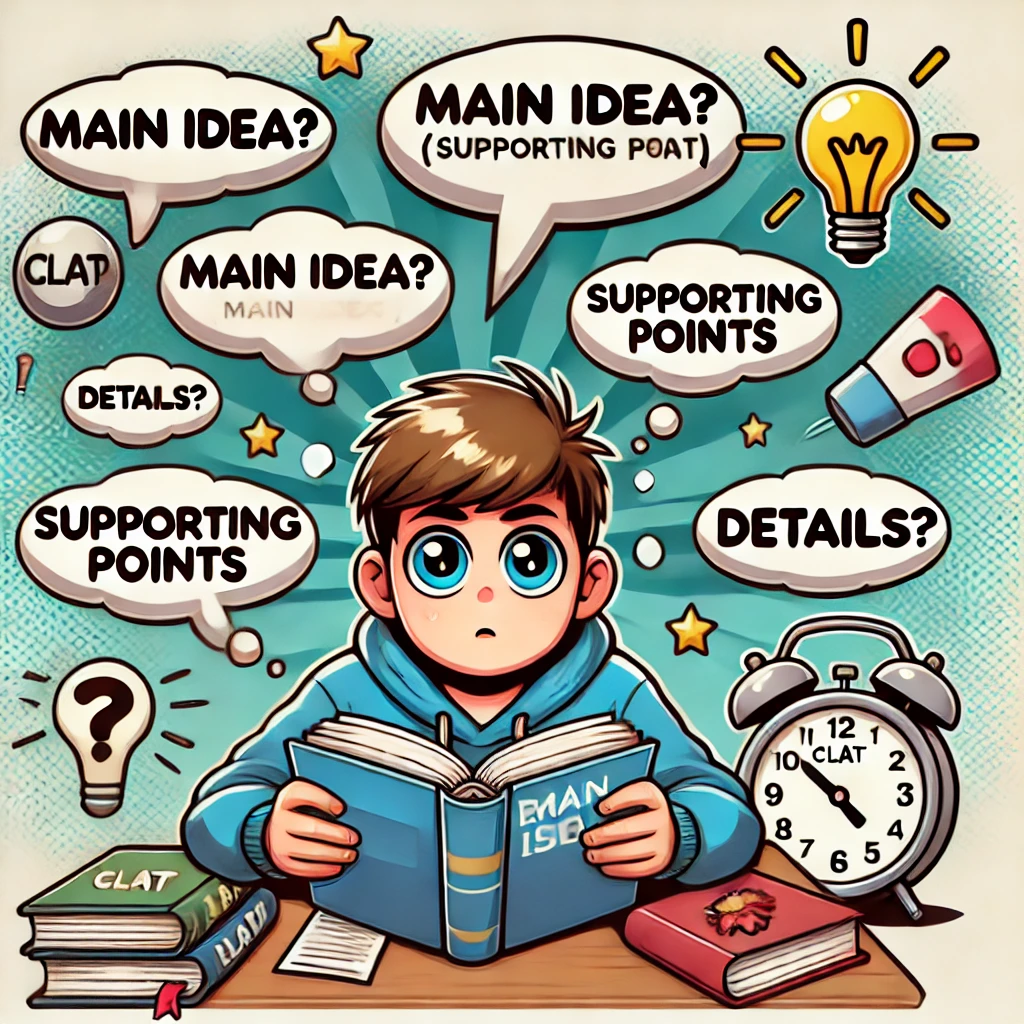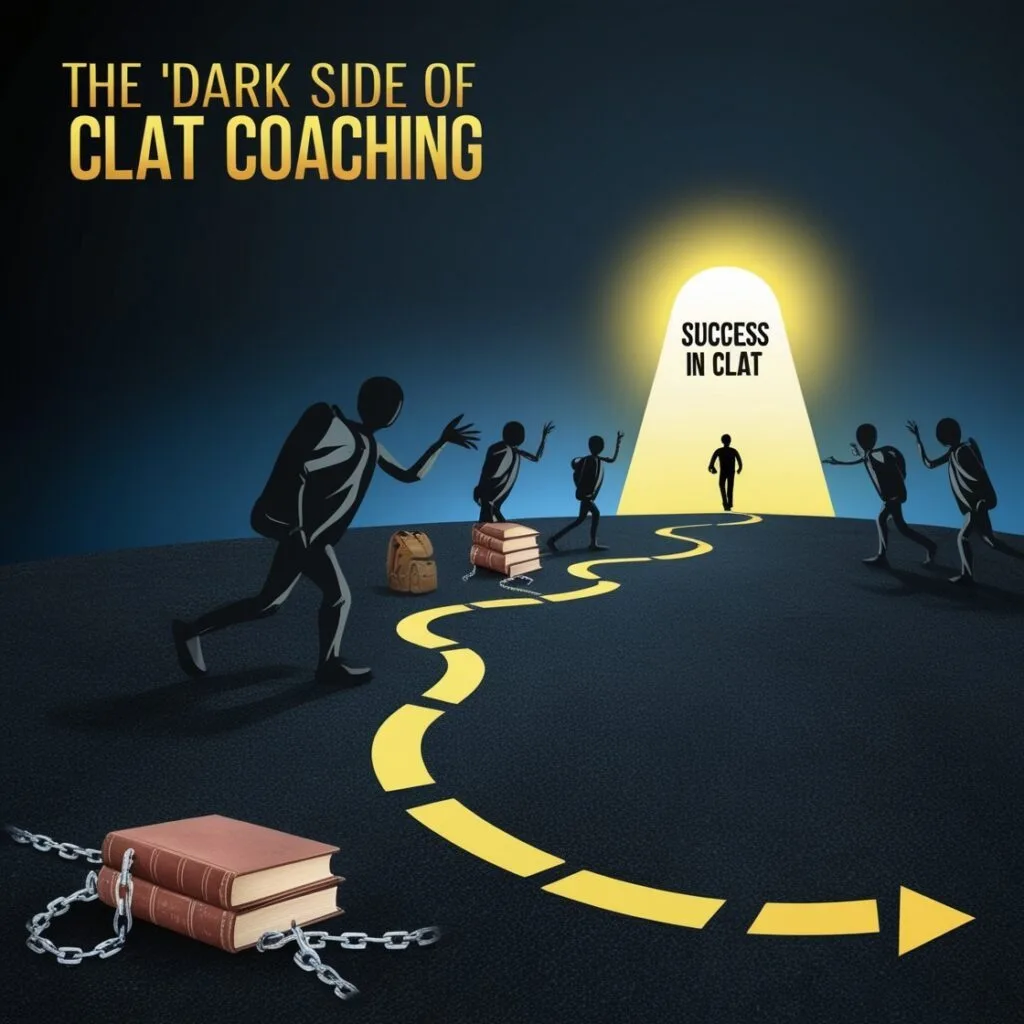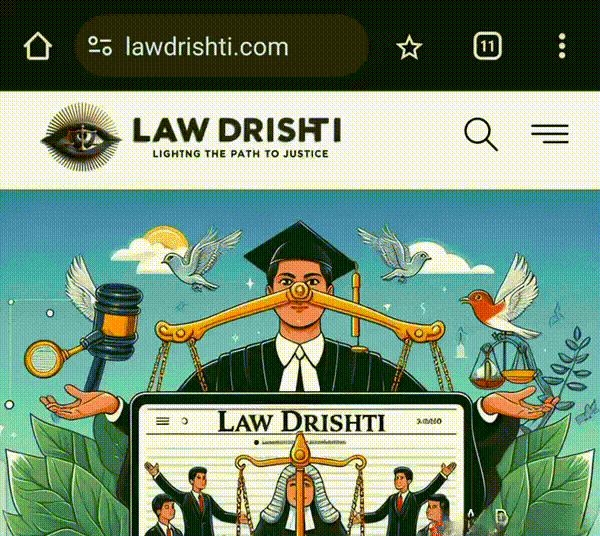
In the CLAT (Common Law Admission Test), reading comprehension plays a pivotal role, especially in sections like English Language, Logical Reasoning, and Legal Reasoning. One of the most essential skills you need to master for this exam is identifying the main idea of a passage. The main idea forms the core of the passage, encapsulating the author’s purpose and message. Understanding it not only helps in answering direct questions but also aids in grasping the passage’s overall context.
In this post, we will break down the process of finding the main idea of a passage in CLAT, covering each aspect in detail.
Why is Finding the Main Idea Important?
Before diving into the strategies, it’s essential to understand why identifying the main idea is crucial in CLAT:
- Answering multiple questions: Many comprehension-based questions revolve around the passage’s main idea, so understanding it ensures a higher accuracy rate.
- Understanding tone and intent: Grasping the main idea helps you decode the author’s tone, whether it’s persuasive, informative, or argumentative.
- Efficient time management: Once you comprehend the passage’s main idea, answering related questions becomes quicker, allowing you to focus on more time-consuming questions.
What is the Main Idea?
The main idea is the central message or point that the author wants to convey through the passage. It usually:
- Summarizes the entire passage in one or two sentences.
- Reflects the purpose or key argument the author is making.
- Is supported by all parts of the passage.
How to Find the Main Idea: A Step-by-Step Approach
1. Read the Passage Holistically First
When you start reading a passage, your primary goal should be to grasp the overall content before diving into details. Follow these steps:
- Skim the passage: On the first read, focus on getting a feel for the passage. Don’t get bogged down by difficult words or complex phrases.
- Look for recurring themes: Authors usually repeat or reference the main idea multiple times in different forms. Watch out for sentences or phrases that seem to sum up the paragraph or make overarching points.
Pro Tip: Try to mentally paraphrase what the author is saying after reading each paragraph. This helps you stay focused on the key points.
2. Identify the Topic of the Passage
To find the main idea, you first need to recognize the topic of the passage. The topic is the subject matter being discussed, and it usually appears early in the text:
- Look for keywords: The first few lines often contain hints about the passage’s topic. The topic might be mentioned explicitly, or it may be implied.
- Ask yourself: What is this passage mostly about? Is it discussing a social issue, a legal principle, a historical event, or a theoretical concept?
For example, if the passage is about climate change policies, then the topic is “climate change and policies.”
3. Focus on the First and Last Paragraphs
The main idea of a passage is frequently introduced at the beginning and reinforced at the end. While not a rule, many authors follow this structure:
- Introduction: The first paragraph usually sets the stage for the main idea by introducing the topic or argument.
- Conclusion: The last paragraph typically sums up the discussion, often rephrasing the main idea for emphasis.
Pay close attention to these sections, as they are more likely to contain the passage’s central argument or theme.
4. Look for Thesis Statements
The thesis statement is a sentence that clearly expresses the passage’s main idea. It often appears near the beginning or end of the introduction. This statement provides a summary of the author’s viewpoint or argument.
Ask yourself:
- Does this sentence sum up the entire passage?
- Is this statement supported by the rest of the text?
For example, if the passage discusses the role of technology in education, a thesis statement might be: “The increasing integration of technology in classrooms is transforming the way students learn.”
5. Identify Supporting Points
Once you have a rough idea of the passage’s topic and thesis, look at the supporting points:
- Does each paragraph relate back to the thesis? Supporting points are usually examples, explanations, or evidence that back up the main idea.
- Is there a logical progression? Ensure that the points follow a consistent line of reasoning, as they help build the argument.
The main idea should be broad enough to encompass all the supporting points but not so general that it becomes vague.
6. Use the Process of Elimination
If you’re struggling to pinpoint the main idea, try using the process of elimination:
- Exclude overly specific ideas: Details and specific facts usually support the main idea but don’t represent it.
- Eliminate unrelated ideas: Some passages may include examples or points that aren’t directly connected to the main argument. Don’t get distracted by these.
For example, if a passage discusses various education systems around the world but focuses primarily on Finland’s success, the main idea is not just about education systems in general but more specifically about Finland’s education model.
7. Check for Repeated Ideas or Themes
Authors often repeat the main idea in different words throughout the passage. By paying attention to recurring words, phrases, or ideas, you can pinpoint the central theme:
- Key phrases like “in essence,” “ultimately,” or “in conclusion” often introduce a rephrased version of the main idea.
- Synonyms and similar ideas repeated in different sections of the passage are strong indicators of the main idea.
For instance, in a passage discussing climate policies, words like “sustainability,” “environmental responsibility,” or “green energy” could repeatedly pop up, indicating the central theme.
8. Distinguish Between the Main Idea and the Author’s Opinion
Sometimes, especially in argumentative or persuasive passages, it can be tricky to distinguish between the author’s opinion and the main idea. While the author’s opinion might be part of the main idea, it doesn’t always encompass it entirely.
- Look for a neutral, overarching message: The main idea is usually broader and represents the whole passage, while the author’s opinion could be a more specific viewpoint or argument within that framework.
For example, if the author argues that technology in education is beneficial, the main idea would be about the role of technology in education, while the author’s opinion would focus on its benefits.
Common Mistakes Students Make While Identifying the Main Idea
1. Focusing Too Much on Specific Details
While it’s essential to understand the specifics, the main idea is never found in small details. Students often get stuck on one part of the passage and mistakenly identify a particular fact as the main idea. Always think broadly.
2. Mistaking the Topic for the Main Idea
Remember, the topic is what the passage is about, but the main idea goes deeper. It answers the “so what?” question and explains what the author wants to say about the topic.
For example:
- Topic: The rise of online education.
- Main Idea: Online education is revolutionizing the traditional education model by providing flexible and accessible learning opportunities for students worldwide.
3. Ignoring Transitional Phrases
Transitional phrases like “however,” “moreover,” and “on the other hand” often signal a shift in the passage, guiding you toward the main idea. Students who overlook these can miss out on understanding how the passage is structured around the main idea.
Practice Exercises to Identify the Main Idea
- Read Editorials: Editorials in newspapers or magazines are usually focused on a single argument or perspective, making them excellent practice material for identifying main ideas.
- Summarize Passages: After reading any article or passage, try summarizing it in one or two sentences. This will help you develop the habit of quickly identifying the main idea.
- CLAT Mock Tests: Use past CLAT comprehension passages for practice. After reading each passage, take a few seconds to write down the main idea before answering the questions.
Conclusion
Mastering the skill of identifying the main idea is crucial for success in CLAT. It not only improves your accuracy in comprehension-based questions but also helps you navigate the exam more efficiently. By reading the passage holistically, focusing on the thesis statement, paying attention to recurring themes, and avoiding common mistakes, you can quickly and accurately determine the main idea. With regular practice, you’ll find yourself not only improving in comprehension but also in overall test performance.









